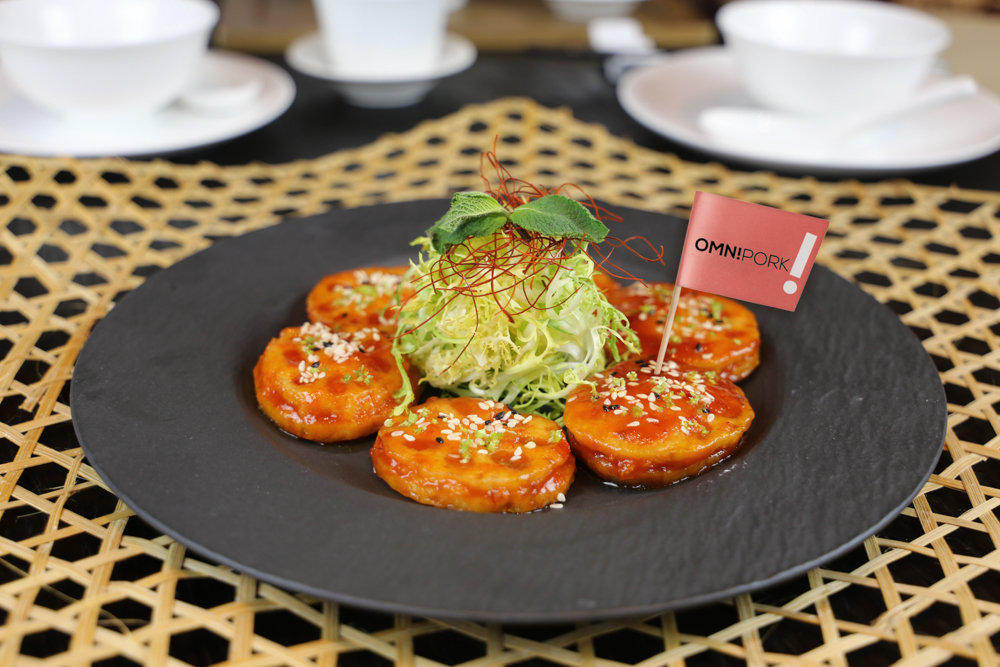There are many topics in the food & drink industry that can draw passionate opinions and viewpoints- from the meta, like the authenticity of a restaurant, to the trivial, like pineapple on pizza (this writer is firmly in the PRO category- your boos mean nothing). One topic inflaming passions of late, especially on the retail side of things, is that of meat substitutes.
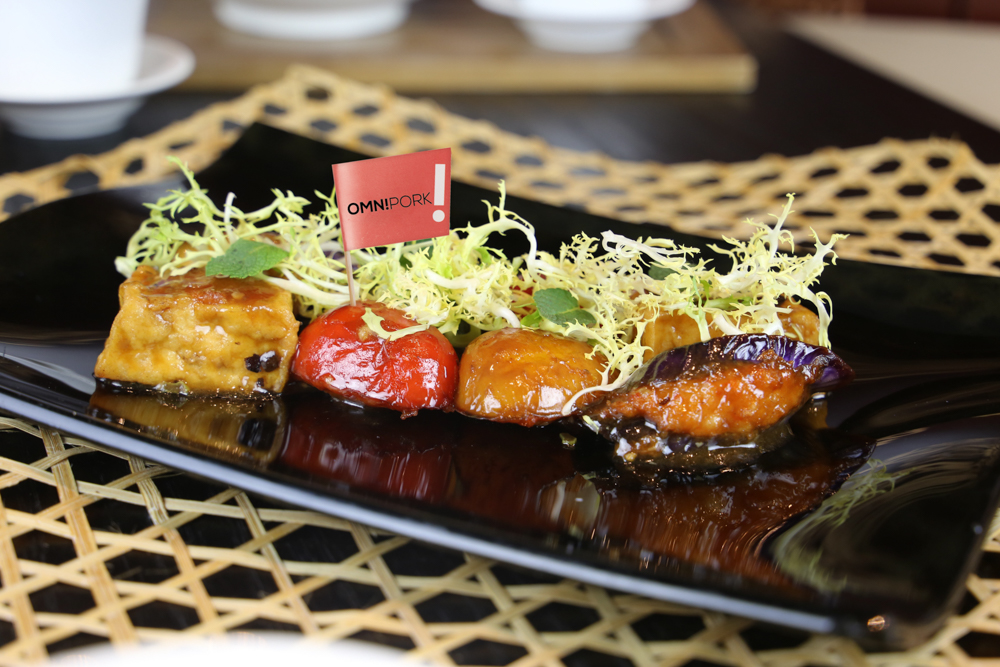 No longer limited to slightly sad bags of Quorn, the meat replacement industry is now worth an estimated ~$4.5 billion a year globally. In addition to the supermarket trade, fast food franchises like McDonalds and KFC have made meat replacements accessible to millions of people in their daily lives. One area they haven’t made much progress into, however, has been the luxury and fine dining market. This sector has always been about luxury, and for top prices, clientele demand top quality taste- something that meat replacements haven’t really managed to supply except in specific instances like hamburgers. Where then, is the high-quality meat replacement, the one that can do everything meat can do? It was in search of the answer to this question that I went travelling to the Royal China Club to try the newest substitute on the block.
No longer limited to slightly sad bags of Quorn, the meat replacement industry is now worth an estimated ~$4.5 billion a year globally. In addition to the supermarket trade, fast food franchises like McDonalds and KFC have made meat replacements accessible to millions of people in their daily lives. One area they haven’t made much progress into, however, has been the luxury and fine dining market. This sector has always been about luxury, and for top prices, clientele demand top quality taste- something that meat replacements haven’t really managed to supply except in specific instances like hamburgers. Where then, is the high-quality meat replacement, the one that can do everything meat can do? It was in search of the answer to this question that I went travelling to the Royal China Club to try the newest substitute on the block.
For those not in the know, Royal China Club is a well known and respected London name in Cantonese food, particularly dim sum.
Think white tablecloths, great attention to detail, excellent service, and skilled chefs- this is several cuts above the typical dim sum or takeaway spot. While it’s a given you’ll have a good meal at RCC, this was no typical meal; I was invited there to try a tasting menu entirely centred around Omnipork, a new vegan pork substitute from Hong-Kong already well known in Asia.
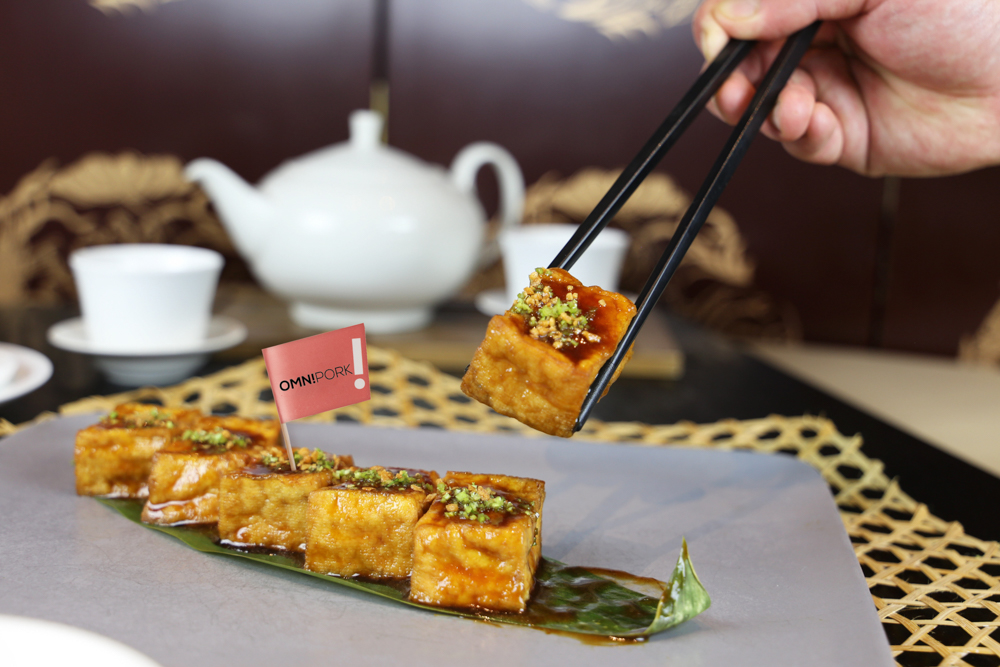
After a warm greeting, we were seated and the event began. Kicking things off was the Omnipork Luncheon Bun, a perfectly pert and springy bao-style bun around a breaded and fried slice of Omnipork with hoisin sauce. Despite my (quiet) doubts, this was a very strong start to the meal. The soft, pillowy bun cradled the crisp Omnipork slice, providing a nice textural counterpoint, while the hoisin sweetness cuts through the richness. It’s only halfway through this course that it strikes me; I couldn’t even tell this wasn’t meat. While breading and frying will cover many sins, the flavour was just what I would expect from tonkatsu.
One down, one point to Omipork. The bun was followed swiftly by delicate, crunchy jicama-wrapped spring rolls filled with (you guessed it) Omnipork. Accompanied by a sharp, vinegary ginger and soy dipping sauce, this was quickly another victory for the substitute. Upon inspection of the filling one could see it didn’t look quite like minced pork, but who cares! They were crispy, golden, and eminently bingeable, and that’s what matters.
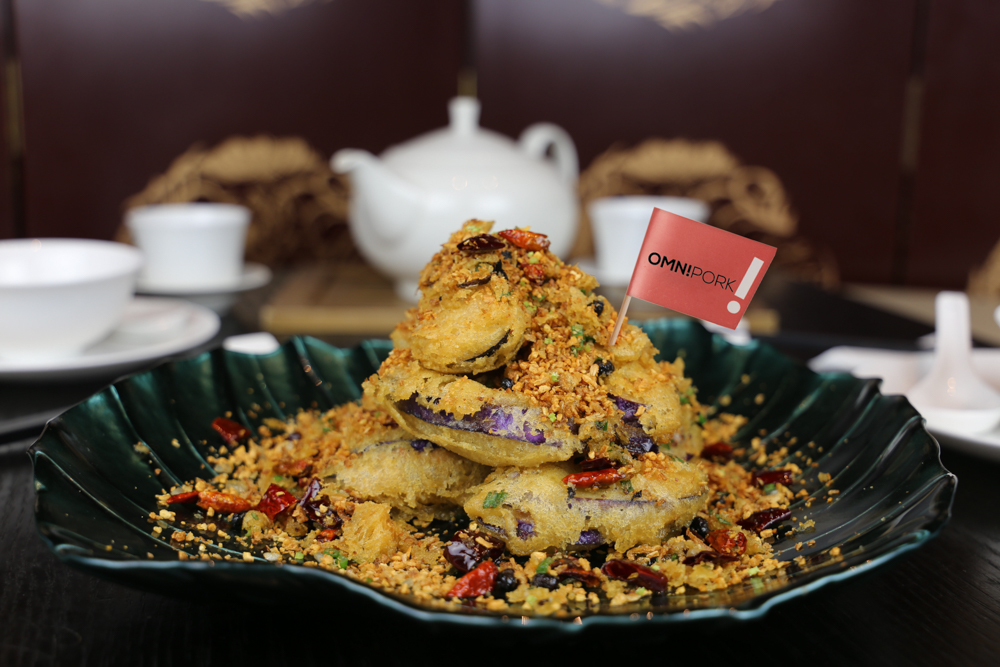
Up next was the hot & sour soup, an absolutely classic dish. The soup itself was a stunning example; a rich, unctuous soup of deep, reddy-brown complexion full of bamboo shards, mushrooms, and strips of Omnipork. Though delicious, I couldn’t help but feel the Omnipork was lost in the mix. Without the porky flavour or the characteristic bite of meat, the strips became just another ingredient, and one without purpose.
The next few dishes chugged along marvellously. Braised beancurd (or tofu to the rest of us) stuffed with Omnipork was perhaps one of the best dishes of the evening- the wafer-thin fried exterior of the bean curd gave way to a soft interior, immediately followed by the “pork” filling. In this dish the Omnipork really came into its own, providing a deep, smoky, almost ‘bacon-y’ flavour to the blank canvas of the tofu, blending harmoniously with the slightly sweet sauce and the water-chestnutty taste of the pak choi.
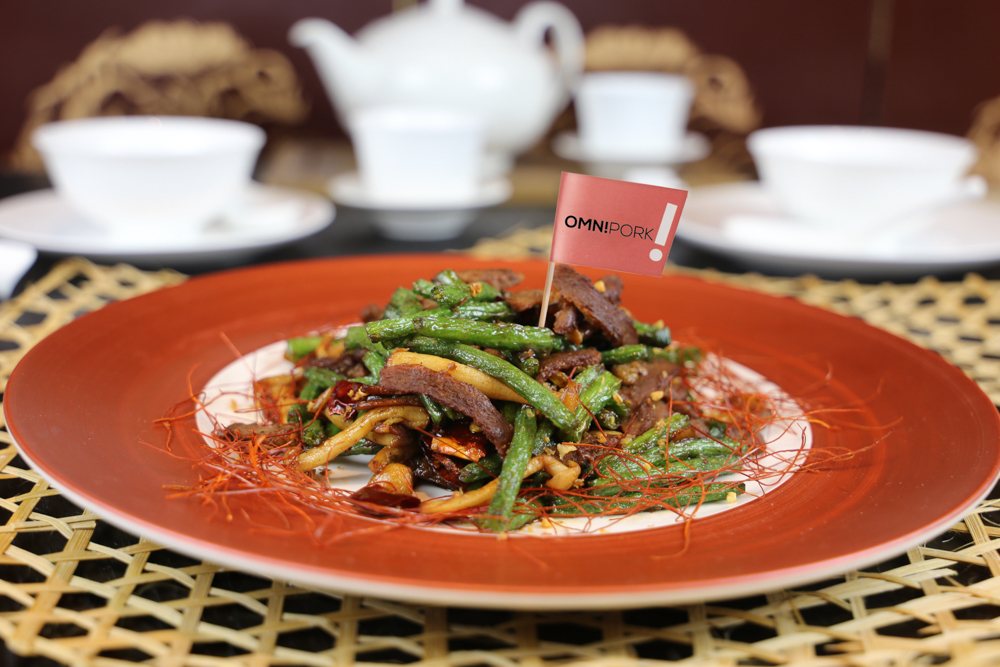
Deep scores are made in an aubergine, then stuffed with Omnipork and doused in a barbeque sauce for an almost ratatouille-style serve. Visually impressive and indisputably tasty, the Omnipork held up its end of the bargain, offering close to the same amount of bite as a thin cut of real pork.
In another dish, grilled Omnipork is layered between slices of lotus root, with deep-fried lotus plant topper and allium to garnish.
Unfortunately, the final dish was also the least favourite of the night; Black Truffle with OmniPork Luncheon Roll. Wonton-style wrappers concealing shredded OmniPork and vegetables, with a light sauce and a slice of black truffle atop each of the two parcels. Though highly desired by many diners, I’ve always regarded the unexpected addition of truffle to dishes as the culinary equivalent of a bribe. Unfortunately, this suspicion is proven correct; the wrappers were chewy and clung to the mouth when chewed, while the filling was entirely underwhelming.
Finally, we were served what was billed as an “Exquisite Dessert” on the menu; an (admittedly head-turning) “lollipop” of sorts. Fried banana in a crunchy caramelised shell sat atop a stick was encircled by a nest of spun sugar threads. Mercifully there was no OmniPork in this dish!
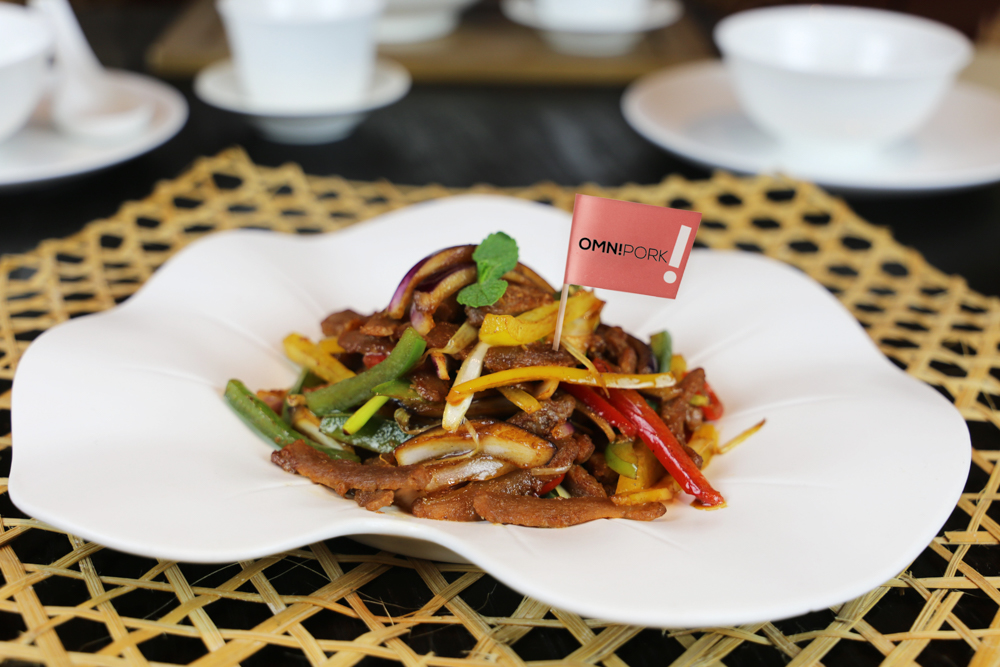
Despite my initial hesitancy to accept this invitation, OmniPork may be the best substitute I’ve had the pleasure of trying. It was appealingly flexible in its formats, allowing for use in a wide variety of recipes. At its best, the flavour was intensely porky with a surprisingly meaty texture and bite. Even in our least favourite dishes, the OmniPork was still a very good alternative to meat.
Meal completed, we emerged from the Royal China Club incredibly well-fed, with questions answered and a new outlook on meat substitutes. Was it a flawless replacement for pork, one which only the most skilled chef or critic could distinguish for the real thing? No. Is that necessarily a deal-breaker? Also no. OmniPork is good enough that it can genuinely stand on its own as a protein- perhaps even in a kitchen near you!


